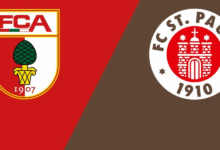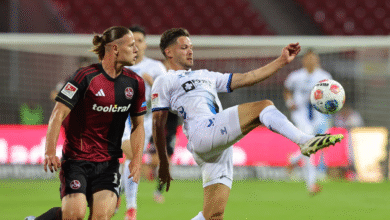crystal palace – liverpool: a deep dive into the fixture

this article is crafted without live web access and draws on general knowledge and analysis up to a recent point in time. it aims to offer a detailed, readable, expert view of the fixture between crystal palace – liverpool, focusing on the themes that matter to fans, analysts and curious readers alike. whether you are after tactical insight, matchday atmosphere guidance, or richer context for why this pairing fascinates, this piece is built to be clear and practical.
understanding the bigger picture around crystal palace – liverpool
the meeting between crystal palace – liverpool is more than a clash of shirts and stadium names. it is a meeting of football identities. one side brings a reputation for resilience, for carving results out of organization and spirit. the other brings a cultural identity tied to intensity, forward momentum and relentless transitions. when those identities collide, the result is a game that can swing from measured patience to breathless chaos in a matter of phases.
fans and observers often describe this fixture as a mirror of modern football contrasts. crystal palace – liverpool embodies the tension between solidity and surge, between compact defensive blocks and aggressive pressing machines. that tension creates stories that linger in memory: late turns of fortune, scrappy set piece dramas, and tactical battles that reward study. approaching this matchup as a curious observer, you will quickly see how narratives are layered: there is the immediate match plan, there is the season context, and there is the longer arc of club trajectories and local culture.
club identities and playing philosophies in crystal palace – liverpool
to understand crystal palace – liverpool you must first get a sense of the clubs as living organisations. crystal palace often cultivates a profile of adaptability. they prize compact shape, quick counters and a knack for exploiting half spaces. they are the kind of team that can frustrate superior possession sides by staying disciplined and exploiting transitions. the spirit that surrounds the club comes from a broad coalition of local supporters who value grit and collective effort. that cultural DNA shows up on the pitch in the form of structured defensive phases and opportunistic attacking moments.
on the other side, the character associated with liverpool centres on vertical urgency and collective pressing. the idea is to remove space from opponents, to turn defence into attack in a heartbeat and to sustain a high tempo that breaks opponents down. while each team evolves with personnel and managerial changes, the core contrasts that define crystal palace – liverpool remain: control and counterbalance against intensity and directness. when these two approaches meet, the chessboard is set. coaches must weigh how to open avenues without exposing their own backline to danger.
tactical chess: how crystal palace adapts to liverpool
tactically, crystal palace approaches the matchup with a clear set of priorities: reduce the effectiveness of wide transitions, deny clear passing lanes between the lines, and exploit moments when liverpool commits men forward. they may compact between certain channels, invite short possession in front of their defensive block, and then seek to switch quickly to the flanks. defending against liverpool often means accepting short-term possession for the opponent while remaining structurally sound and aggressive in the moments the ball travels into dangerous pockets.
in attack, crystal palace aims to be incisive and pragmatic. they look to create overloads in isolated areas and to make the most of set plays and second ball situations. that pragmatism is decisive in crystal palace – liverpool because it transforms the game into discrete episodes rather than a constant contest. by breaking the match into episodes, crystal palace can conserve energy, frustrate the opposition rhythm and strike when momentum shifts in their favour. that is the tactical blueprint that often yields surprise.
how liverpool counters the crystal palace blueprint
liverpool’s counter approach is built around relentless intensity and quick transitions. their plan in a game like crystal palace – liverpool is to make possession difficult for the opponent through coordinated pressing triggers and to exploit the spaces that open when the opponent defends deep. by forcing hurried passes and rushed exits, liverpool aims to create turnovers in positions that lead directly to goal opportunities. this pressing game is not random; it is a structured method of compressing time and constricting decision making.
in possession, the emphasis is on quick interchanges, vertical runs and fluidity that drags defenders out of position. that fluidity makes crystal palace – liverpool a tactical puzzle because the defending side must decide whether to remain compact and anger the crowd with limited forward play, or to step out and invite passing movements that might break them. success for liverpool in this fixture is often measured less in long spells of dominance and more in decisive sequences where pressing and positioning combine to produce clear chances.
key roles and matchups that define crystal palace – liverpool
a useful way to read crystal palace – liverpool is through role matchups rather than player names. watch the duel between the wide forwards and the full backs; those lanes often determine the attacking flow. if the wide forwards can isolate their defenders or drag them into chasing runs, space will appear in central areas for strikers or midfield runners. conversely, if defenders maintain positional discipline and force play into congested areas, attacking moves lose momentum.
midfield is another decisive battleground in crystal palace – liverpool. the fight for the second ball, the timing of forward runs and the ability to recycle possession under pressure are all fundamental. midfielders who can sustain quick, accurate passes and who time their defensive interventions well give their team a platform to control phases. the matchup here is almost always about balance: who can impose their rhythm and who will be reactive. that difference frequently decides the outcome.
managers and the wider strategic duel in crystal palace – liverpool
managers shape the narrative of crystal palace – liverpool. the chess match begins long before kick off, as managers decide on structure, personnel, and psychological framing. one manager might prize patience and incremental pressure, while the other chooses to impose an early tempo that tests defensive concentration. each choice carries risk. conservative plans may preserve structure but concede initiative, while aggressive plans may generate excitement but leave gaps.
beyond tactics, managers build confidence and identity. the way a coach frames this fixture to players—through instruction, rehearsal and motivational speech—can tilt the psychological edge. the managerial duel in crystal palace – liverpool is therefore not just a set of on-field choices but a battle of preparation, messaging and trust. teams that prepare for the opponent as a complete organism—anticipating counterpressing, set piece tendencies and substitution patterns—are better placed to influence outcomes.
stadiums and atmosphere: selhurst park versus anfield in crystal palace – liverpool
the arena shapes the drama of crystal palace – liverpool. at selhurst park the environment tends to be intimate and roaring, with stands close to the playing surface and a passionate local crowd that can impose a kind of home rhythm. that closeness amplifies everything: the sound of tackles, the urgency of sprinting feet and the communal inhale of a crowd waiting for a chance. for visiting teams, the tight stadium creates the sensation of a cauldron that demands focus.
anfield brings a different architectural and cultural experience. its long history of iconic nights and sustained collective singing gives the home side an aura of momentum. the familiar ebb and flow of song becomes a backdrop that amplifies pressure on opponents in long possession phases. when the fixture is labelled crystal palace – liverpool, the venue determines how each team will express itself. one setting invites compactness and countering; the other amplifies tempo and waves of attack.
fan culture, rituals and local stories around crystal palace – liverpool
fan culture colors every meeting in crystal palace – liverpool. supporters on both sides bring rituals, chants and stories that feed the match narrative. for crystal palace fans, there is a strong local identity, a sense of community that celebrates the underdog spirit. for liverpool fans, there is a tradition of expectation that carries its own weight—a belief in sustained movement and collective remembering of great nights.
these rituals shape how the teams play. singing, flags and ritualized actions create an emotional context that players feel. a crowd that believes in the possible can raise performance in critical minutes. conversely, pressure can cause small mistakes to magnify. if you attend a crystal palace – liverpool game, notice the micro rituals: the specific chants that arrive at crucial moments, the timing of applause for defensive bravery, and the communal release after a decisive intervention. it all contributes to the match’s character.
memorable narratives and what they mean for future crystal palace – liverpool encounters
every fixture adds to a shared archive of stories. crystal palace – liverpool produces narrative threads that commentators and fans revisit: comebacks, tactical masterstrokes, late drama and moments when a single decision changed the mood of the match. these narratives matter because they build expectations. they become part of the psychological terrain teams carry into future matches.
when a team has a recent memory of success in this pairing, confidence grows. when a sequence of close losses accumulates, players may press harder and take risks that change the game. those emotional legacies are subtle but potent. fans remember turning points, and managers adapt tactics to either honour or overturn the prevailing story. in that way, crystal palace – liverpool is an evolving conversation across seasons rather than an isolated event.
reading the game with statistics and advanced metrics in crystal palace – liverpool
statistics add clarity to the noisy picture of a match. using modern metrics like expected goals, pressing intensity and progressive passing gives analysts a structured language to describe the game. in crystal palace – liverpool, expected goals can show whether chances were concentrated in high value zones, while pressing metrics reveals which team aggressively forced turnovers. these measures do not replace watching; they enrich it.
a thoughtful fan or analyst uses statistics to reconcile what felt like a comfortable match with what the data reveals. maybe a team dominated possession yet failed to convert high quality chances. maybe pressing created many turnovers but few were in decisive areas. by blending careful observation with metrics, the story of crystal palace – liverpool becomes more nuanced: it is not just who won, but why the game unfolded in particular rhythms and where small advantages accumulated.
matchday planning and how to get the most from crystal palace – liverpool
attending or watching crystal palace – liverpool is more gratifying when you prepare. for attendees, arrive early to soak in the pre match energy; local neighbourhood pubs and fan zones often carry their own character and lore. if you are travelling from outside the city, plan routes that avoid last minute rushes and look for recommended transport hubs that are safest and most convenient. remember that matchday logistics shape mood: a relaxed arrival sets the tone for enjoying the game rather than reacting to stress.
for viewers watching remotely, set up your viewing environment so that you can follow tactical shifts and key players easily. if you enjoy analysis, have a few tools ready: a notebook for notes about pressing triggers, a replay service to check key sequences and a voice line or chat with friends to share reactions. crystal palace – liverpool is a match that rewards attention because tactical phases often hide the defining moments. being ready turns the experience into both entertainment and study.
considerations for fantasy and speculative engagement with crystal palace – liverpool
if you engage in fantasy football or speculative prediction around crystal palace – liverpool, adopt a measured approach. value players who thrive in the fixture for structural reasons: fullbacks who cross often, midfielders who arrive late into the box, and forwards who are known for converting set piece opportunities. prioritize players whose roles are central to the team’s likely plan rather than those on streaky form.
also keep in mind the variability of the fixture. crystal palace – liverpool can produce low scoring, tactical battles as easily as high tempo exchanges. that variability means balanced selections are safer than overcommitting to one narrative. finally, be mindful of rotation and rest patterns; teams sometimes preserve players for larger strategic plans. a cautious, informed approach tends to win out over dramatic gambles.
the transfer market, squad building and how crystal palace – liverpool reflects wider themes
when clubs look at squad building, fixtures like crystal palace – liverpool inform recruitment. teams prioritise profiles that help them in recurring matchups: players who can handle pressing, defenders who cope with vertical runs, and creative players who can unlock tight blocks. crystal palace often looks for pragmatic additions that fit a compact system, while teams on the other side may seek dynamic attackers who destabilise deep defending.
beyond individual signings, the fixture highlights the importance of balance. a squad heavy on flair may struggle against disciplined structures, while a team overly oriented toward defence may lack the cutting edge required in transition. effective squad building is therefore about versatility—having personnel who can adapt when a match requires a different mood. that adaptability matters most in crystallising success across a season.
youth, academy influence and the future storylines in crystal palace – liverpool

youth systems matter because they determine the stylistic continuity of a club. academy graduates who understand a club’s rhythms are more likely to fit seamlessly into the first team. in crystal palace – liverpool contexts, youth players sometimes bring unexpected energy and unpredictability, which can be decisive against established opponents. a well managed pathway turns academy products into strategic assets rather than seasonal experiments.
as both clubs evolve, the fixture will continue to reflect the choices made in academies, recruitment and coaching. teams that invest in coherent identity from the ground up produce players who can embody the club’s philosophy. that deep bench of identity becomes a competitive edge over time and shapes how crystal palace – liverpool unfolds in the seasons to come.
media, narratives and how coverage frames crystal palace – liverpool
media coverage transforms match details into broader storylines. narrative choices—what sequences are replayed, which quotes are highlighted and what tactical frames are promoted—shape public perception. crystal palace – liverpool provides fertile ground for such framing because it allows commentators to pick a side: the tenacious organiser or the relentless attacker. that framing influences fan discourse and can even affect player psychology.
critical media consumers recognise this filter. watch how pre match narratives prime audiences and how post match explanations refine understanding. a thoughtful reader or viewer will look for longform analysis that explains not just what happened but how it happened. in that light, crystal palace – liverpool becomes a case study in how football is made sense of publicly, and why critical thinking matters in sports fandom.
practical checklist for attending or watching crystal palace – liverpool
below is a compact checklist to increase enjoyment and understanding of crystal palace – liverpool. use these prompts to focus your attention and to get the best from the experience.
| focus area | what to look for |
|---|---|
| match tempo | who sets the rhythm and how that rhythm changes |
| pressing moments | when turnovers lead to clear chances |
| wide play | whether full backs or wingers create decisive openings |
| set pieces | how the teams use dead ball situations |
| substitutions | how changes shift momentum |
| crowd influence | how the stadium atmosphere affects decision making |
this table is meant to be a practical guide. check these areas as the match progresses and you will find that the most important patterns reveal themselves through repetition.
good analysis is less about predicting certainty and more about spotting the recurring patterns that create advantage.
frequently asked questions about crystal palace – liverpool
is crystal palace – liverpool usually a high scoring match?
the fixture swings. sometimes tactical caution keeps scores low; at other times the match erupts into multiple chances and goals. the balance depends on team selection, managerial intent and in game events like injuries or early cards. prepare for both possibilities by focusing on structural patterns rather than assuming one outcome.
what tactical approach gives the best chance against the opponent in crystal palace – liverpool?
there is no single correct answer. success often comes from a well rehearsed plan that neutralises the opponent’s strengths while exploiting their vulnerabilities. compact defensive organisation combined with quick, vertical transitions can be effective against high tempo attackers, while patient possession and overloads can make disciplined counters less likely.
which positions tend to decide this fixture?
wide positions and central midfield are decisive. wide attackers and full backs interact to create overloads, while midfield battles determine who controls the tempo and who provides forward runners. these areas are where small advantages become match defining.
are there matchday rituals fans should know for crystal palace – liverpool?
both supporter groups have strong traditions. attending early to participate in pre match singing or fan gatherings enhances the experience. respectful interaction between fan groups creates a better atmosphere for everyone. local supporter resources and club guidance are good for up to date practical advice.
how should fantasy managers think about players from these clubs?
prioritise role and function. players central to the team’s expected plan on matchday are safer picks than those riding short form. also consider squad rotation and fixture congestion; managers rotate in response to heavier schedules.
what should visitors know about travel and safety for attending the match?
plan arrival and departure to avoid last minute stress. use recommended public transport hubs and consult local guidance on safe routes. matchday information on official club channels provides tailored advice for each fixture.
can young players change the narrative in crystal palace – liverpool?
absolutely. youth players can offer unpredictability and fresh energy. when academy talents are well integrated, they may provide the creative spark necessary to alter the tactical balance.
how do media narratives influence public perception of the fixture?
media selects which moments to amplify. a sequence that is replayed extensively becomes part of the shared memory. critical viewing helps fans avoid taking every headline at face value.
Conclusion
crystal palace – liverpool is a fixture that rewards attention, curiosity and context. it is a meeting of contrasting identities, tactical plans and fan cultures that together produce a compelling narrative. whether you approach the match as a fan, an analyst or a curious observer, focusing on patterns, roles and the human stories behind choices will deepen appreciation and understanding. enjoy the match, notice the details, and let the fixture teach you about the richer rhythms that shape the beautiful game.





